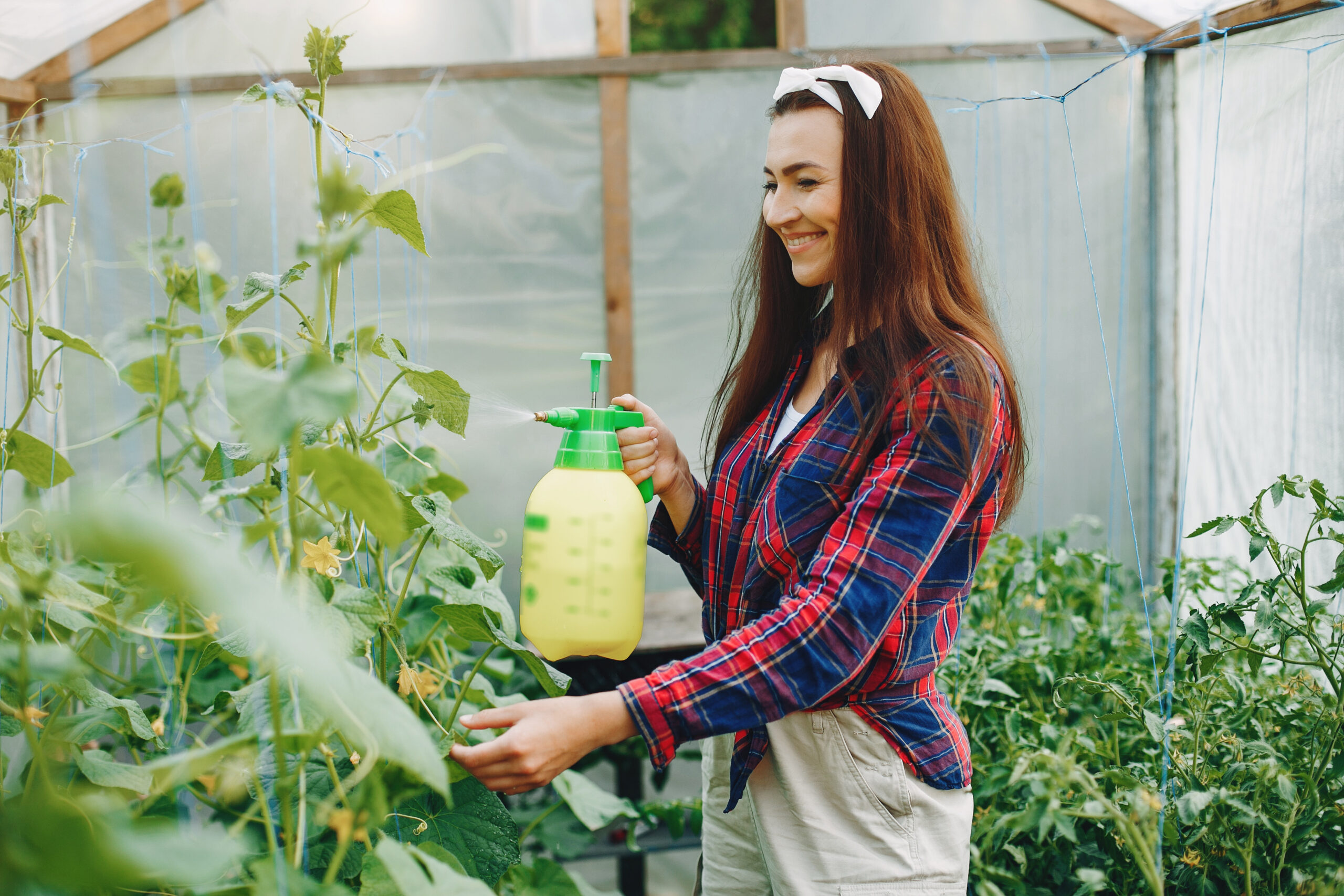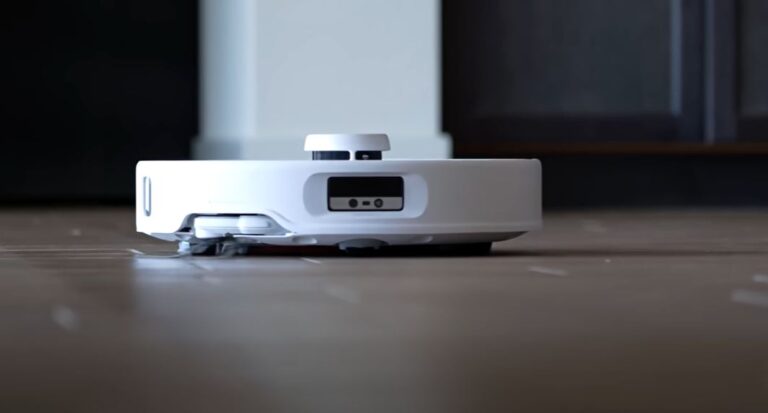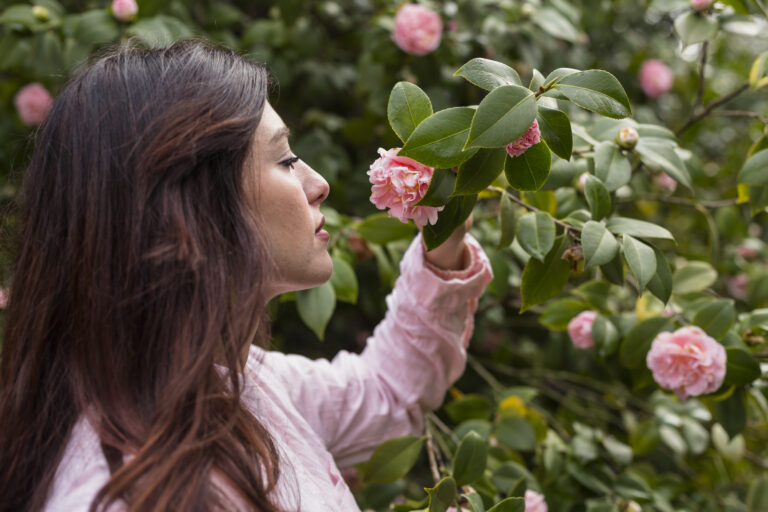10 way how to use baking soda in vegetable garden
My journey with baking soda in the garden began with a common problem: powdery mildew.
I had a beautiful zucchini plant one summer, and it seemed to be thriving until a white, dusty film started to appear on the leaves.
I was hesitant to use harsh chemical sprays, as I wanted to keep my garden as natural as possible. I remembered reading a blog post that mentioned baking soda as a potential remedy. Skeptical but willing to try anything, I mixed up a simple solution and sprayed it on the affected leaves.
To my surprise, it worked! The spread of the mildew slowed down significantly, and the existing patches began to recede. It was a simple, non-toxic solution that gave me a new perspective on natural gardening.
Baking soda, or sodium bicarbonate, is a common household item that can be a valuable addition to a gardener’s toolkit. It’s a natural, safe, and incredibly inexpensive option for dealing with a variety of garden issues. Its primary benefit lies in its ability to alter the pH of surfaces, creating an environment that is less hospitable to certain pests and diseases.
It’s important to remember that baking soda is not a magic bullet. It won’t solve every garden problem, and it’s not a replacement for good gardening practices like proper watering, air circulation, and healthy soil. Instead, think of it as a helpful tool a gentle and effective option that can be used to prevent and manage common issues without resorting to more aggressive chemical treatments. It’s a testament to the power of simple, natural solutions in creating a thriving and healthy garden.
What Baking Soda Does in the Garden
At its core, baking soda is a simple, yet powerful, substance. Its scientific name, sodium bicarbonate, reveals its key components and helps us understand its effects in the garden. When dissolved in water, it creates a mildly alkaline solution with a pH of around 8. It’s this alkaline nature that makes it a useful tool for gardeners.
How it Affects Fungi, Pests, and Soil
- Fungi: Baking soda’s most well-known use is as a preventative fungicide. Fungal diseases like powdery mildew, black spot, and rust thrive in a slightly acidic environment. When you spray a baking soda solution on plant leaves, it raises the surface pH, creating a hostile environment that inhibits the germination of fungal spores. It’s important to note that baking soda is considered “fungistatic” rather than “fungicidal”—it prevents new growth but generally doesn’t kill an established infection. This is why it’s most effective as a preventative measure or when used at the very first sign of disease.
- Pests: The effect of baking soda on pests is more limited and often debated. Some gardeners use it to deter soft-bodied insects like slugs and snails, as the abrasive and salty nature of the powder can desiccate them. However, many “baking soda” pest sprays are more effective due to the addition of other ingredients like horticultural oil or soap, which act as a surfactant to suffocate or deter pests.
- Soil: Baking soda is an alkaline substance, and its high pH can be used to raise the pH of acidic soil. While some gardeners use it for this purpose, it’s generally not recommended for large-scale application. The effect is often short-lived, and a continuous build-up of sodium in the soil can be detrimental to plant health, leading to nutrient imbalances and poor water absorption. It is, however, a great tool for a simple DIY soil pH test.
Benefits and Limitations
Benefits:
- Natural and Non-Toxic: Baking soda is a safe, non-toxic alternative to chemical pesticides and fungicides, making it a great choice for organic and family-friendly gardens.
- Inexpensive and Accessible: It’s a common, cheap household product that most people already have on hand.
- Effective for Prevention: It can be highly effective at preventing certain fungal diseases, particularly powdery mildew, when applied correctly and consistently.
Limitations:
- Not a Cure-All: Baking soda is not a miracle cure. It’s best used as a preventative measure and is largely ineffective against severe or established infestations and diseases.
- Risk of Plant Burn: Too high a concentration of baking soda in a solution can cause leaf burn, especially in hot, direct sunlight. The high sodium content can also build up in the soil and harm plants over time.
- Requires Reapplication: Since it’s water-soluble, a baking soda spray will wash away with rain or watering, requiring frequent reapplication to remain effective.
- Limited Scope: Its use is primarily limited to preventative measures against certain fungal issues. For other problems like pest infestations, more effective and targeted organic solutions like neem oil or insecticidal soap are often a better choice.
Using Baking Soda as a Natural Fungicide
When it comes to fungal diseases, baking soda is a powerful tool for prevention and early intervention. Powdery mildew is a common and persistent problem, especially on plants in the cucurbit family like cucumbers, squash, and zucchini, as well as on roses and lilacs. The white, dusty patches can weaken the plant and reduce its yield. This is where a baking soda spray can be particularly effective.
Recipe for a Natural Fungicide Spray A simple and widely recommended recipe is:
- 1 teaspoon of baking soda
- 1 quart (1 liter) of water
- A few drops of mild liquid soap (like Castile soap, not laundry detergent) or horticultural oil.
The soap or oil acts as a “sticker” or “surfactant,” helping the baking soda solution adhere to the leaves rather than just rolling off. Mix the ingredients thoroughly in a spray bottle.
How to Spray Safely The key to success is careful application. Spraying in the middle of a hot, sunny day can cause the leaves to burn, so always apply the solution in the early morning or after sunset. Be sure to lightly mist both the top and underside of the leaves, as well as the stems. It’s not necessary to drench the plant, just to coat the surface evenly. Because the solution is water-soluble, it will need to be reapplied after rain or watering.
Personal Tip: When powdery mildew first appeared on my zucchini leaves, I used this exact recipe. I started by removing the most heavily affected leaves to improve air circulation and then sprayed the rest of the plant. I found that a weekly application was enough to keep the mildew at bay for the rest of the season. It didn’t “cure” the leaves that were already affected, but it stopped the spread and allowed the new growth to remain healthy.
Baking Soda for Pest Control
While baking soda is most effective as a fungicide, it is also sometimes used in creative ways to deter or kill certain pests. The general principle is that the alkalinity and high sodium content of baking soda can be harmful to some insects.
For Ants and Caterpillars A common home remedy involves creating a mixture to be ingested by pests. A typical recipe is to mix equal parts baking soda with powdered sugar or flour.
How it Works (or Doesn’t) The theory behind this method is that the sugar or flour attracts the pests, who then ingest the baking soda. The baking soda is said to disrupt their digestive systems, particularly the acidic stomachs of ants. While this sounds plausible, some research suggests it may not be as effective as believed, as adult ants may not consume solid food. However, it can still act as a deterrent, as the presence of baking soda can disrupt their scent trails. For soft-bodied pests like cabbage worms or caterpillars, sprinkling the mixture on the leaves they’re eating is said to be a desiccant, drying out the pests and killing them.
Where to Place It For ants, the mixture is best placed near their nests or along their trails. For caterpillars, lightly dust the foliage of affected plants.
My Trial-and-Error Story I first tried the baking soda and sugar mixture to deal with a persistent line of ants marching to my vegetable bed. I put little piles of the mixture on the ground near their entry points. The ants were indeed attracted to the sugar, but the results were mixed. It seemed to disrupt their path for a while, but it didn’t eliminate the colony. I’ve had much better luck with a solution of diluted dish soap, which acts as an effective and gentle insecticide by suffocating the pests. As for caterpillars, I tried a baking soda and flour dust on a cabbage plant. It did seem to deter the caterpillars and they became less of a problem, but it required frequent reapplication and made the leaves look dusty. Ultimately, I’ve found that for pest control, other natural remedies like insecticidal soap or neem oil are more reliable, but the baking soda mixture can be a useful, albeit temporary, a solution in a pinch.
5. Weed Control with Baking Soda
Baking soda’s effectiveness as a weed killer lies in its high sodium content.1 When applied directly to a plant, the sodium bicarbonate absorbs moisture from the leaves, effectively “burning” and dehydrating the plant.2 This works best as a spot treatment for weeds growing in non-garden areas, such as cracks in sidewalks, driveways, or between patio pavers.3
Why it works on weeds but not safe for desirable plants:
Baking soda is a non-selective herbicide.4 This means it will harm or kill any plant it comes into contact with, not just the weeds.5 The high sodium content can also build up in the soil, making it inhospitable for future plant growth.6 This is a crucial distinction and a major reason why it should never be used as a broad-spectrum weed killer in garden beds.
Personal Caution:
I learned this lesson the hard way. Early on, I had a few stray weeds pop up in the mulched path between my raised vegetable beds. Thinking a quick dusting of baking soda would be an easy solution, I sprinkled it directly on the weeds. A few days later, the weeds were gone, but so were the edges of my lettuce and spinach plants in the adjacent bed. The baking soda had washed into the soil and caused leaf burn on the tender greens. It was a clear reminder that baking soda is a potent substance and its use must be highly localized and intentional.
6. Adjusting Soil pH with Baking Soda
Soil pH is a measure of its acidity or alkalinity, and it’s a critical factor in how well plants can absorb nutrients.7 While baking soda is alkaline and can raise soil pH, it’s not a long-term solution and should be used with extreme caution.8
When to consider it:
Baking soda should only be considered for very small-scale, emergency adjustments to raise the pH of overly acidic soil. For large areas, or for a long-term fix, it’s always better to use agricultural lime or wood ash, which provide a more stable and sustainable change to the soil’s chemistry.
A simple DIY pH test:
Before you even consider using baking soda, you should test your soil’s pH. You can do a simple home test by taking a soil sample and placing it in a container. Add some water to create a mud-like consistency. Then, sprinkle a small amount of baking soda onto the soil. If it fizzes or bubbles, it means your soil is acidic (with a pH below 7.0), and a small adjustment might be beneficial.9
How to apply small amounts to raise pH slightly:
For a very minor pH increase, you can dissolve about 1 tablespoon of baking soda in a gallon of water and use it to water a small area of a plant that prefers more alkaline conditions, like some varieties of hydrangeas or tomatoes.10 The effect is temporary, and it’s essential to not overdo it.
Warning:
The sodium in baking soda can build up in the soil over time, leading to a condition called “sodic soil,” which can impede water drainage and harm plant roots.11 Additionally, many vegetables, including tomatoes, peppers, and most leafy greens, thrive in slightly acidic soil (12pH 6.0-7.0).13 Using baking soda on these plants can throw the soil’s balance off, leading to nutrient lock-out and poor plant health.14 Always know the preferred pH of your plants before attempting any soil amendment. For long-term soil health, professional soil testing and the use of natural amendments like lime are far superior options.
Important Safety and Usage Tips
While baking soda is a natural and often effective gardening solution, it’s crucial to use it correctly to avoid harming your plants and soil. Think of it as a powerful ingredient—a little goes a long way.
- Always Test Spray on One Leaf First: Before you spray your entire plant or garden, always perform a patch test. Apply the baking soda solution to a single, inconspicuous leaf and wait 24-48 hours. If you see any signs of leaf burn, yellowing, or damage, dilute your solution and test again. Some plants are more sensitive than others, and the weather conditions at the time of spraying can also affect the outcome.
- Avoid Spraying in Hot Sun to Prevent Leaf Burn: The sun and the ingredients in a baking soda solution can create a reaction that scorches plant leaves. The water droplets act like tiny magnifying glasses, intensifying the sun’s heat. To prevent this, always apply your spray in the early morning or in the evening after the sun has set. This gives the solution time to dry and the plant time to absorb its effects without the risk of burning.
- Use Sparingly to Avoid Alkaline Buildup in Soil: Baking soda is sodium bicarbonate, a salt. Just like table salt, too much of it can be detrimental to soil health. Repeated use, especially if the solution drips into the soil, can lead to a buildup of sodium. This can increase the soil’s pH to an unhealthy level for most plants and impede their ability to absorb water and nutrients, even if they are present in the soil. For this reason, baking soda sprays are best used as a preventative measure and applied only when necessary, not as a daily or even weekly treatment.
- Never Substitute Baking Soda for Balanced Fertilization: Baking soda offers no nutritional value to plants. It is a tool for pest and disease management, not a fertilizer. While some people claim it can “sweeten” tomatoes or “boost blooms,” these effects are not proven and the risk of harming the plant by over-applying a sodium-based product far outweighs any potential benefit. For healthy, vibrant plants, stick to a regular fertilization schedule with a balanced, plant-specific fertilizer.
FAQs
- Is baking soda safe for tomatoes? Baking soda can be used on tomatoes, particularly to combat powdery mildew, a common problem for them. However, tomatoes are sensitive plants, and it’s essential to use a very diluted solution (no more than 1 teaspoon per quart of water) and to test-spray a single leaf first. Over-application can lead to leaf burn and negatively impact the soil’s health, which in turn can affect the plant.
- Can baking soda kill blight? No, baking soda is not an effective treatment for blight. Blight is a serious fungal disease that can quickly destroy a plant, and a baking soda spray will do little to stop its progress. For blight, it’s best to remove and destroy affected plant parts immediately and, in severe cases, use a targeted, copper-based fungicide. The best defense against blight is prevention through proper plant spacing, watering at the base of the plant, and choosing disease-resistant varieties.
- How often should I spray baking soda? For preventative purposes against powdery mildew, a weekly application is often sufficient, but it must be reapplied after rain. If you’re using it to manage an existing, minor outbreak, you may need to spray every few days until the problem is under control. However, it’s crucial to watch for any signs of leaf burn. If you see any, stop spraying immediately or dilute your solution further.
- Does baking soda harm earthworms or pollinators? When used in a diluted spray on plant leaves, baking soda is generally considered safe for earthworms and pollinators. It’s not a systemic poison. However, it can harm them if applied directly or if it builds up in the soil. For this reason, it’s essential to use it sparingly and to avoid drenching the soil around the base of the plant where earthworms and beneficial soil microorganisms live. As for pollinators, it’s always best to avoid spraying while they are actively foraging to minimize any contact.
10. Conclusion
My journey with baking soda in the garden has been one of trial and error, and it’s taught me a great deal about the power and the limitations of natural gardening solutions. I’ve seen it work wonders on powdery mildew and act as a reliable deterrent for some garden issues. It’s truly a testament to the idea that effective solutions don’t have to be complex or expensive.
However, the most valuable lesson has been one of balance. While baking soda is a helpful tool, it is not a replacement for fundamental, good gardening practices. A thriving garden is built on healthy, well-draining soil, proper watering, and good air circulation. Baking soda is a great aid to have on hand, but it’s the consistent care and attention to the basic needs of your plants that will truly lead to a bountiful harvest.






